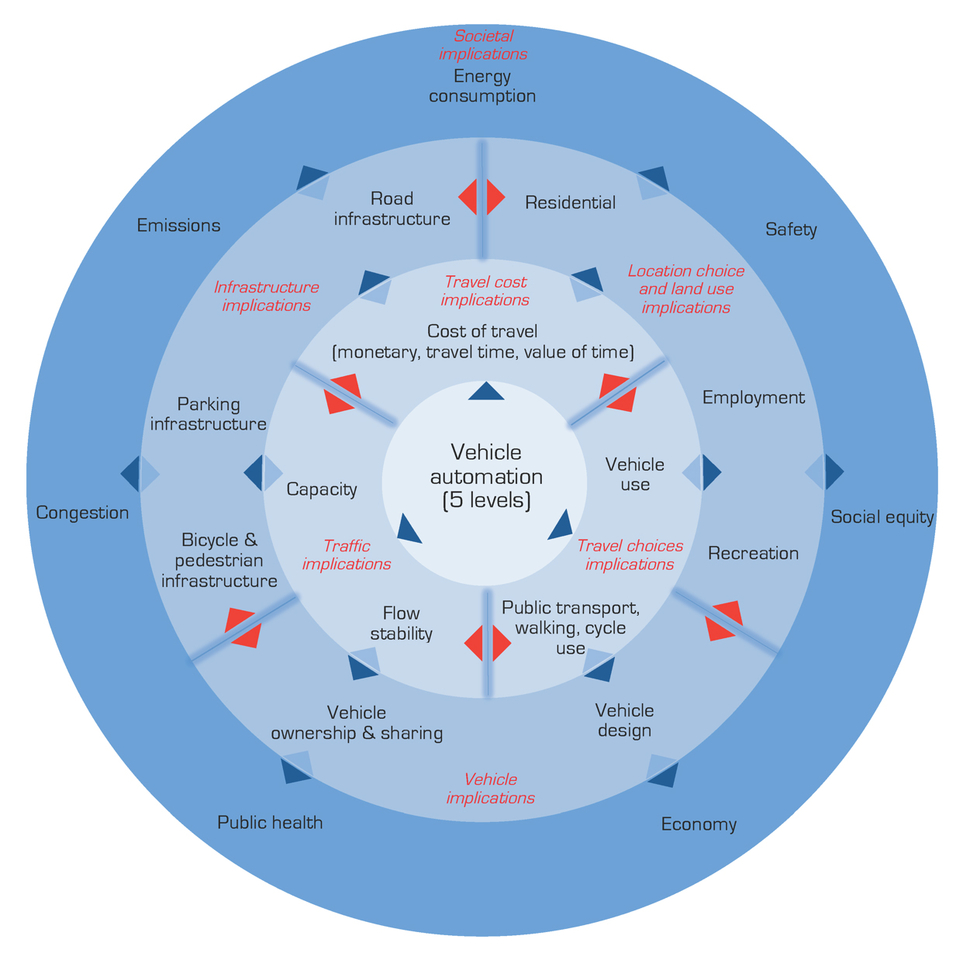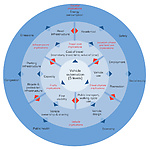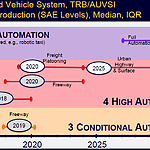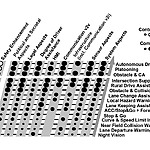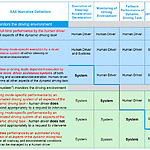The time span of 50 years, from now until 2065 is a long period to make predictions and suggestions for. On a larger scale, the main actions and actors that will affect the mobility future in Texel are: economy and the relevant stakeholders, municipality‘s decisions, and people’s acceptance and cooperation. Focusing on the mobility system, the main parameters we considered and also those that we would like to create impact on, are the landscape of Texel, the vehicles and sources in use. While being in the process of designing the mobility of the future for Texel, we have focused on the most promising research projects on the subject, according to our vision. In this paragraph, first, our vision is given and then, the two main scenarios involved (sharing car system and intelligent cycle paths) are further explained.
Our intention is to integrate the most sustainable suggestions for mobility in a developed transport system for Texel. At this stage, the purpose of brainstorming and researching is to identify the different scenarios involved, through creative thinking and at the same time, to leave the possibilities for new ideas to pop up open (flexibility of the developing system).
Summarizing our vision for Texel 2065, an isolated transport system powered by local energy sources is suggested. Dynamic, circular, nonpolluting car sharing systems and smart cycling paths will be the main possibilities for transport. The driving paths network can potentially be minimized as a result of optimization and green areas can replace them. The Local energy can potentially be produced by the following sources: seaweed, water, wind, sun.
Shaping our vision for mobility in Texel by 2065 looks to our eyes like a science fiction scenario. As described in several papers, the future intelligent transport systems include extremely intelligent, automated vehicles, that completely reshape the transportation system as we know it at the moment. As estimated, between 2025 and 2045, automated vehicles will likely be a reality in the Netherlands and this will have significant implications for mobility and planning policies. Basically, this scenario is intended to replace the public transport and the private cars with a new taxi/car-sharing service. However, technologies, policies, customers’ attitude are the uncertain driving forces for the future of this scenario. The sustainable character of such a change has to do with the reduce in fuel consumption (which is estimated between 10 and 15%), the decrease of the emissions and therefore the improvement of air quality. Moreover, congestion and travel time will be decreased, due to the well-organized flow of the automated cars within the network (paths optimization etc.). In addition to this, better travel safety will be achieved (10-20 % reduction in accidents). Last but not least, the parking areas’ surface will be dramatically decreased (as explained later on). All the aforementioned points could potentially be the arguments for the presentation of this idea in Texel.
Such an innovative technology demands very high integration in the area of its implementation. This means, for example, developing response emergency services, cheap alternatives for traffic management and of course a developed road design. In the case of Texel, transportation within the Port area is an important matter, as the concentration of people, at the peak hours, increases the risk of accidents, especially in case of emergency. Cooperation between public and private sector is necessary for such a fast development in mobility. The suppliers and infrastructure operators involved should create a friendly for the users system, in order to attract the customers’ interest. The acceptance of this new way of moving, by the locals and the travellers will play an important role, for the successful integration of the new Technologies. The behavioral adaptation of people should happen through educational process.
Finally, let’s describe the function of the automated vehicles scenario: You order a “taxi” at the location where you are. The “taxi” picks you up a few minutes later. During the travel, you don’t need to do anything, so you can admire the view or read or work etc. After the drive, the automated vehicle “taxi” will pick up the next customer, or drive back to the common parking area, somewhere outside the center. Some of the benefits of this are: less effort for the user, no random parking spots and more “free” natural landscape.
Bicycle is maybe the most sustainable vehicle to use and for this reason it is smart to develop the cycle paths network in Texel.
A trend that already has gained interest refers to Intelligent cycle paths. What does the word intelligent add to comparing to the regular cycle path? An example that has been realized is that of “Light-on-demand Motion - Sensor lighting on the Strandstien foot and cycle path in the city of Kalundborg April 2015”. The main idea in this scenario is to improve the safety feeling of the users, in order to increase the efficiency of bicycle as mobile transport. Traffic accidents happen in the dark! The LED light sensors (system implemented in Frederiksberg on 2012) support energy efficiency and create a bright environment where during the night all the important figures are recognizable and readable. The urban space becomes also more attractive. Both pedestrians and cyclists feel safer this way.
The technology of sensors can potentially be implemented for the purpose of optimizing the functionality of cycle paths in many other ways. A very good case could be sensors that give priority to the cyclist in a cross-point, where cars and bicycles meet. Such cases are currently being examined by the experts and will definitely be integrated in the cycle paths network of the future. In the case of bicycle, also the acceptance of users is expected to be very high, as cyclists are overexposed and therefore should be protected as much as possible.
The last scenario, which is of a great importance suggests a platform that will inform the users about the current situation of the traffic system and that will also provide them with the possibility of planning their journey by finding the smartest mobility choice (maybe a combination of walking, cycling and use of car-sharing).
By setting the long term goal, we create an optimistic scenario for 2065 that will give a positive direction for the development of sustainable mobility in Texel. Thinking of all the aforementioned possibilities, it is obvious that there are many new options for traffic management, starting from the improvement of the existing infrastructures. The transition from the current situation to the future will include all the steps to be made concerning the different technologies that make sense to integrate in the sub-system, while at the same time controlling the social, technical and spatial impact.
Links
https://www.youtube.com/watch?v=G68UBCj30H4
